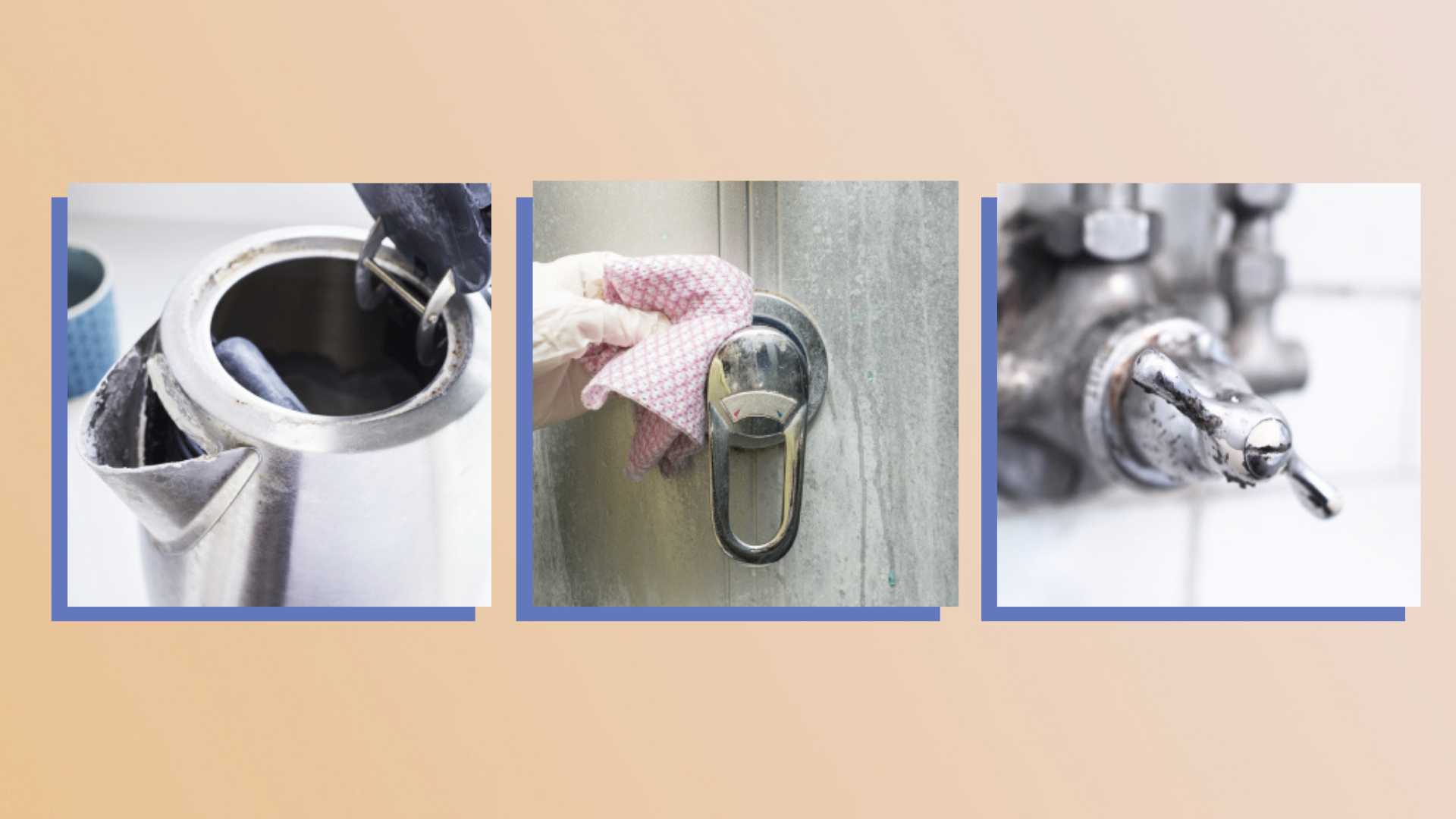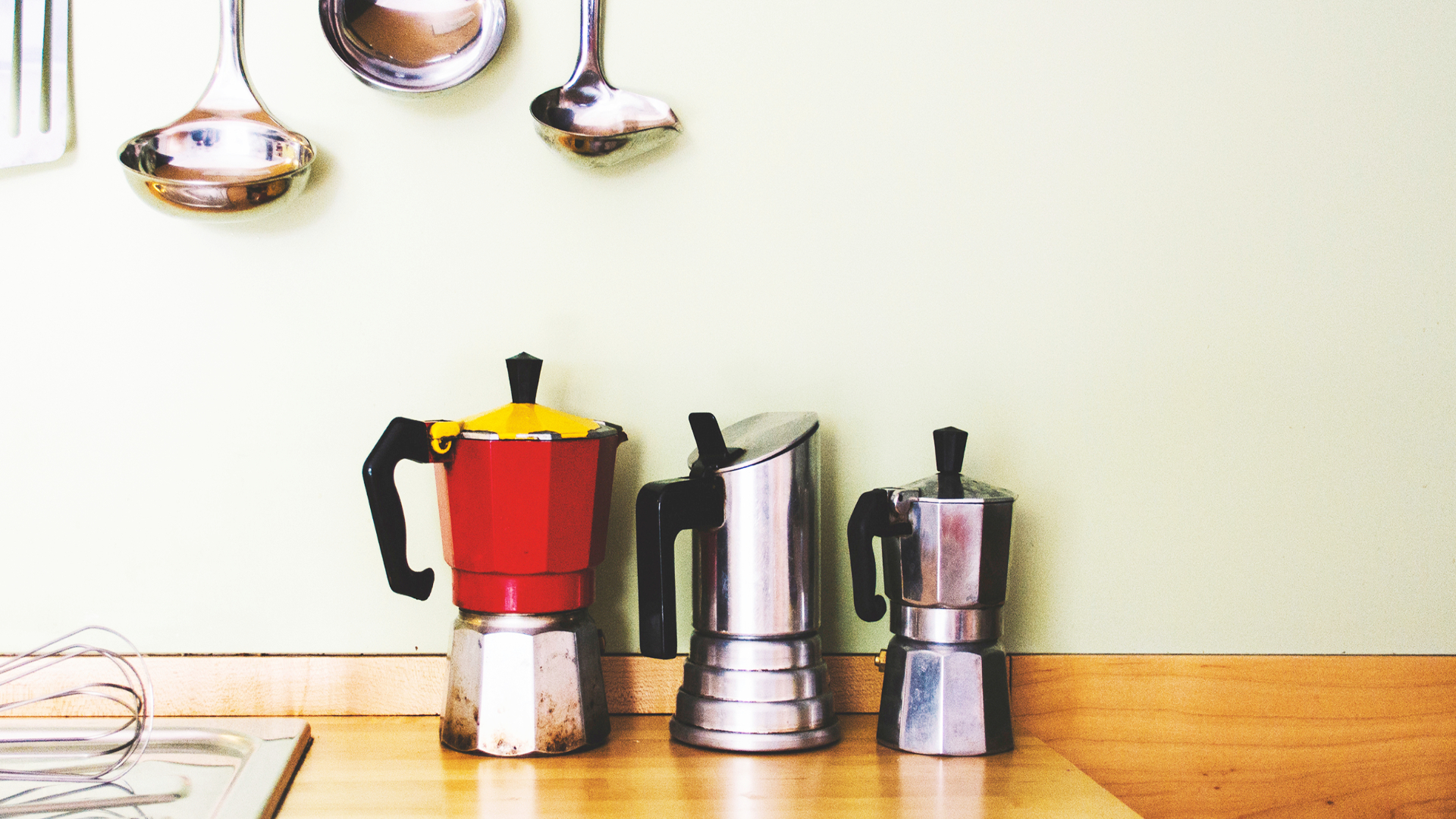How to get rid of limescale from anywhere in the home easily and effectively
Calcium carbonate—more commonly know as limescale—can be easily tackled with a mild acid solution

If you are looking for the most effective method for how to get rid of limescale, you're not alone. We can spend a lot of time cleaning our homes, but faucets and fixtures can still look corroded and dirty thanks to this crusty, scaly build-up on plumbing systems. Not to mention the dreaded limescale build-up in kettles, coffee makers, bathtubs, and showers.
The accumulation of limescale starts with hard water coming from our taps. Depending on your location and where your water is supplied, you could have a higher than average amount of calcium carbonate in the water—which then forms limescale residue.
It's important to learn how to get rid of limescale, as not only does it look unsightly, but limescale build-up will eventually damage your fixtures and reduce water flow. While there are plenty of limescale cleaners on the market, it's useful to remember that many use harsh chemicals and can actually be harmful to your plumbing. Instead, try a simple homemade solution using natural ingredients that you probably already have in your kitchen—and don't come with any risks.
If you want more information on how to blitz the areas of your home where limescale can occur, check out our guides on how to clean a toilet, how to descale a kettle, and how to clean an iron.
How to remove limescale quickly and easily
There are four basic steps to help you get rid of tough limescale build-up during your kitchen cleaning or bathroom cleaning routine. These steps can be applied to any area, whether you're tackling stains in the bathtub or shower, on taps, or on kitchen or bathroom surfaces.
The four steps to get rid of limescale are:
- Mix up a cleaning solution
- Wipe the area clean
- Spray or soak the limescale stains
- Rinse the area
1. Mix up a cleaning solution

Before you can learn how to remove limescale, you will need to mix up a cleaning solution. Some of these items are likely to be in your kitchen already, but, if not, you can pick all these things up at your local store.
Sign up to our free daily email for the latest royal and entertainment news, interesting opinion, expert advice on styling and beauty trends, and no-nonsense guides to the health and wellness questions you want answered.
You will need:
- An empty spray bottle
- Vinegar
- Lemon juice
- Water
In your empty spray bottle, mix equal parts of water and vinegar. The acid in vinegar has the power to break down calcium carbonate residue without causing damage. Then add a few drops of lemon drops to the solution—lemon juice also has acidic properties and will leave a fresh scent, too.
2. Wipe the area clean
Your next step will be to wipe the area clean—you can do this with a dry or wet cloth. You just want to remove any loose debris on the area, in any cracks or crevices, or around tap fixtures. Doing this will allow more of the cleaner to reach the limescale build-up.
3. Spray or soak the limescale stains
The level of build-up will determine if you need to spray the area or soak it. If you are tackling a bathroom or kitchen faucet and it is covered around the base, you should soak a cloth or tea towel in the cleaning mixture and wrap it around the affected area. This will give the acid time to break down the calcium. This technique also works in hard-to-clean shower and bathtub areas.
If you are dealing with a crusty faucet tap, you can take half a lemon and smush it into the spout, and leave for an hour before tackling the area. This should hold long enough to let the lemon juice do its work.
For tile, glass, and counter surfaces, you can use the spray bottle. Spray the area thoroughly and wipe it down. You might need to make several passes to get a clean shine. If you find any spots that are particularly stubborn, try using a non-scratching brush or sponge.
4. Rinse the area
The last step is rinsing the area. Although the vinegar's strength has been diluted by mixing it with water, you will still want to remove any acid residue. If you are cleaning the shower, spray the walls and surfaces with water, then dry them. If you are cleaning the counter or fixtures, dampen a cloth with water and simply wipe it off.
How to remove limescale from household items

Some items in your house will also develop a crusty build-up of limescale. This can make those items appear dirty and, in some cases, affect how well they work—kettles, for example, as mentioned above.
Removing limescale build-up on these items will follow a similar process to the above, using a 50/50 mix of vinegar and water with a few drops of lemon juice, but there are a few special considerations to bear in mind depending on which household item you want to clean.
Removing limescale from your coffee maker
Coffee machines are brilliant for crafting your morning brew, but are also hotspots for limescale build up thanks to their exposure to tap water. Using filtered water can help to reduce this, but if you do have limescale build-up, simple follow these steps to blitz your machine.
Directions:
- Pour the vinegar/water solution into the coffee maker as if you were about to brew some coffee.
- Turn it on and allow it to make a big pot of hot vinegar water. Next, run water through it twice to rinse away the vinegar taste and leave to air dry.
Removing limescale from glassware
Unsightly limescale stains have no place on your best glassware. Carry out this quick and easy method and your glassware should sparkle like new.
Directions:
- Fill the kitchen sink halfway with the water and vinegar mixture.
- Next, add any glassware that has a white chalky coating.
- After letting the dishes sit for about 30 minutes, scrub, rinse, and dry.
Removing limescale from windows
If you have any windows that receive regular pelting from the garden sprinklers, you'll want to remove or prevent hard water build-up from forming. Start with going through how to clean windows, so you have no general muck on there first.
Directions:
- Spray the cleaning solution on the window and use a non-scratching sponge to remove the residue.
- Make sure to remove any excess vinegar thoroughly to prevent any paint damage around the window frame.
Amy Hunt is an experienced digital journalist specialising in homes, interiors and hobbies. She began her career working as the features assistant at woman&home magazine, before moving over to the digital side of the brand where she eventually became the Lifestyle Editor up until January 2022. Amy won the Digital Journalist of the Year award at the AOP Awards in 2019 for her work on womanandhome.com.

